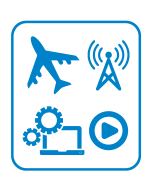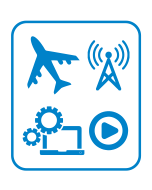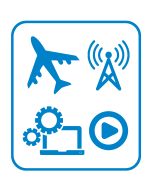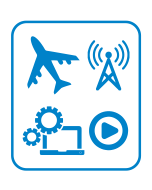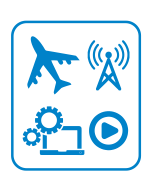Global Future Risks—Future-proofing your Strategies, 2030
Global Future Risks—Future-proofing your Strategies, 2030 Updated Research Available
An Assessment of the Top 21 Risks that Threaten the Next Decade
30-Apr-2020
Global
$4,950.00
Special Price $3,712.50 save 25 %
Description
Our world is evolving rapidly, and so are risks. Rapid innovation, growing political tensions, climate change and the unexpected rise of infectious diseases have made it increasingly complex to anticipate, assess, or mitigate risks.
Risks are now increasingly interconnected, which if amplified can trigger a ripple effect across industries, regions, and diverse stakeholder groups. Therefore, mitigating them will involve the adoption of a cohesive, interdisciplinary, and multipronged approach. Policymakers, businesses, and individuals are constantly challenged, often due to their unpreparedness, to assess the impact and to identify growth opportunities emerging from these risks.
The global future risks report provides a compelling analysis that will not only help stakeholders understand the impact of future risks but also equip them to act on clear growth opportunities. The risks discussed in this study were determined by our global team of futurists, consultants, and analysts, with consultation from thought leaders throughout the company. As such, they encompass a broad spectrum of risks, reveal future impacts around the world, and outline growth opportunities for risk mitigation.
Our rigorous research process involves the collation of an exhaustive list of global risks for the short, medium and long terms. These have then been filtered to identify the top 21 risks affecting 4 key spectrums: global stability, ecological balance, human productivity, and technological advancement.
At the risk impact assessment level, the study analyzes key indicators, drivers and trigger points that influence the risk and outlines their impact through the short, medium and long terms. The study also provides a risk scenario assessment wherein both negative and positive outcomes are discussed for two scenarios: risk mitigated versus risk amplified. New growth opportunities that correspond to the risk have been identified as per projected impact and certainty. The study also provides an insight into the next strategic action companies must take to mitigate these risks and leverage growth opportunities.
The short, medium and long-term risks are identified as follows:
Short-term Risks: A hyperconnected world will expose governments, organizations, and individuals to privacy, disinformation and cybersecurity threats. Two-thirds of the world will live in water-stressed conditions and natural disasters will erode ecological balance. Infectious diseases such, as the ongoing Coronavirus outbreak will trigger global health and economic concerns. International trade disputes, rising protectionism, political upheavals, and national withdrawals (e.g., Brexit) could severely affect global economic activity.
Medium-term risks: About 60% of the world’s population will live in cities by 2025, leading to infrastructure stress and a shortage of productive employment opportunities. The lack of basic amenities and low agricultural output could lead to a resource nexus. Human productivity will be affected by a rapidly aging population. Dietary imbalances and undernourishment will result in obesity and malnutrition. Climate change will cause the global temperature to rise by 1.5°C if carbon emissions are not curtailed.
Long-term risks: AI and automation could together replace 20 million jobs by 2030. Rapid advances in AI could put critical national infrastructure at risk and potentially lead to a state of cyber warfare. An unethical and unregulated digital environment could pose serious threats to personal and organizational privacy and national security. An increasingly squeezed middle class will result in a global state of wealth inequality. A national identity crisis could result in geopolitical conflicts, marginalization, and terrorism.
The complete list of risks is given below.
Short-term Risks:
• Privacy & disinformation
• Cyber risks
• Neo-nationalism and political upheaval
• Water crisis
• Rise of infectious diseases
• Global economic slowdown
• Natural disasters
Medium-term Risks:
• Urbanization risks
• Obesity & lifestyle risks
• Future of mental wellbeing
• Climate change
• Resource nexus
• Aging and at-risk population
• Malnutrition and health risks
Long-term Risks:
• AI as a Threat
• Future of neural interfaces and invasive technologies
• Future of digital regulatory uncertainty
• National identity crisis
• Shifting global alliances
• Future of wealth inequities
• Threats to the future of work
The study presents more than 80 growth opportunities arising from these 21 risks, which will help policymakers, companies, and individuals take immediate, tactical and strategic actions and draw plans to mitigate risks.
Author: Vinay Venkatesan
RESEARCH: INFOGRAPHIC
This infographic presents a brief overview of the research, and highlights the key topics discussed in it.Click image to view it in full size

Table of Contents
Key Findings
Our Global Future Risk Universe
Introduction
Introduction—How to Read this Study
Our Four Pillars of Risk Assessment—An Overview
Our Four Pillars of Risk Assessment
Risk 1—Privacy & Disinformation Risks: An Overview
Risk 1—Privacy & Disinformation Risks: Levers
Risk 1—Privacy & Disinformation Risks: Risk Scenario Assessment
Risk 1—Privacy & Disinformation Risks: Opportunity Analysis
Risk 2—Cyber Risks: An Overview
Risk 2—Cyber Risks: Levers
Risk 2—Cyber Risks: Risk Scenario Assessment
Risk 2—Cyber Risks: Opportunity Analysis
Risk 3—Neo-nationalism and Political Upheaval: An Overview
Risk 3—Neo-nationalism and Political Upheaval: Levers
Risk 3—Neo-nationalism and Political Upheaval: Risk Scenario Assessment
Risk 3—Neo-nationalism and Political Upheaval: Opportunity Analysis
Risk 4—Water Crisis: An Overview
Risk 4—Water Crisis: Levers
Risk 4—Water Crisis: Risk Scenario Assessment
Risk 4—Water Crisis: Opportunity Analysis
Risk 5—Rise of Infectious Diseases: An Overview
Risk 5—Rise of Infectious Diseases: Levers
Risk 5—Rise of Infectious Diseases: Risk Scenario Assessment
Risk 5—Rise of Infectious Diseases: Opportunity Analysis
Risk 6—Global Economic Slowdown: An Overview
Risk 6—Global Economic Slowdown: Levers
Risk 6—Global Economic Slowdown: Risk Scenario Assessment
Risk 6—Global Economic Slowdown: Opportunity Analysis
Risk 7—Natural Disasters Risks: An Overview
Risk 7—Natural Disasters Risks: Levers
Risk 7—Natural Disasters Risks: Risk Scenario Assessment
Risk 7—Natural Disasters Risks: Opportunity Analysis
Risk 1—Urbanization: An Overview
Risk 1—Urbanization: Levers
Risk 1—Urbanization: Risk Scenario Assessment
Risk 1—Urbanization: Opportunity Analysis
Risk 2—Lifestyle and Obesity Risk: An Overview
Risk 2—Lifestyle and Obesity Risk: Levers
Risk 2—Lifestyle and Obesity Risks: Risk Scenario Assessment
Risk 2—Lifestyle and Obesity Risk: Opportunity Analysis
Risk 3—Future of Mental Wellbeing: An Overview
Risk 3—Future of Mental Wellbeing: Levers
Risk 3—Future of Mental Wellbeing: Risk Scenario Assessment
Risk 3—Future of Mental Wellbeing: Opportunity Analysis
Risk 4—Climate Change Risks: An Overview
Risk 4—Climate Change Risks: Levers
Risk 4—Climate Change Risks: Risk Scenario Assessment
Risk 4—Climate Change Risks: Opportunity Analysis
Risk 5—Resource Nexus: An Overview
Risk 5—Resource Nexus: Levers
Risk 5—Resource Nexus: Risk Scenario Assessment
Risk 5—Resource Nexus: Opportunity Analysis
Risk 6—Aging and At-Risk Population: An Overview
Risk 6—Aging and At-Risk Population: Levers
Risk 6—Aging and At-Risk Population: Risk Scenario Assessment
Risk 6—Aging and At-Risk Population: Opportunity Analysis
Risk 7—Malnutrition and Health Risks: An Overview
Risk 7—Malnutrition and Health Risks: Levers
Risk 7—Malnutrition and Health Risks: Risk Scenario Assessment
Risk 7—Malnutrition and Health Risks: Opportunity Analysis
Risk 1—AI as a Threat: An Overview
Risk 1—AI as a Threat: Levers
Risk 1—AI as a Threat: Risk Scenario Assessment
Risk 1—AI as a Threat: Opportunity Analysis
Risk 2—Future of Neural Interfaces and Invasive Technologies: An Overview
Risk 2—Future of Neural Interfaces and Invasive Technologies: Levers
Risk 2—Future of Neural Interfaces and Invasive Technologies: Scenarios
Risk 2—Future of Neural Interfaces and Invasive Technologies: Opportunity Analysis
Risk 3—Future of Digital Regulatory Uncertainty: An Overview
Risk 3—Future of Digital Regulatory Uncertainty: Levers
Risk 3—Future of Digital Regulatory Uncertainty: Risk Scenario Assessment
Risk 3—Future of Digital Regulatory Uncertainty: Opportunity Analysis
Risk 4—National Identity Crisis: An Overview
Risk 4—National Identity Crisis: Levers
Risk 4—National Identity Crisis: Risk Scenario Assessment
Risk 4—National Identity Crisis: Opportunity Analysis
Risk 5—Shifting Global Alliances (Post Western Order): An Overview
Risk 5—Shifting Global Alliances (Post Western Order): Levers
Risk 5—Shifting Global Alliances (Post Western Order): Risk Scenario Assessment
Risk 5—Shifting Global Alliances (Post Western Order): Opportunity Analysis
Risk 6—Future of Wealth Inequities: An Overview
Risk 6—Future of Wealth Inequities: Levers
Risk 6—Future of Wealth Inequities: Risk Scenario Assessment
Risk 6—Future of Wealth Inequities: Opportunity Analysis
Risk 7—Threats to the Future of Work: An Overview
Risk 7—Threats to the Future of Work: Levers
Risk 7—Threats to the Future of Work: Risk Scenario Assessment
Risk 7—Threats to the Future of Work: Opportunity Analysis
Conclusion—Strategic Action Mapping
The Last Word—Strategic Recommendations
Legal Disclaimer
List of Exhibits
List of Exhibits (continued)
List of Exhibits (continued)
List of Exhibits (continued)
List of Exhibits (continued)
List of Exhibits (continued)
Popular Topics
| No Index | No |
|---|---|
| Podcast | No |
| Author | Vinay Venkatesan |
| Industries | Cross Industries |
| WIP Number | K3FB-01-00-00-00 |
| Is Prebook | No |
| GPS Codes | 9A3B |
 USD
USD GBP
GBP CNY
CNY EUR
EUR INR
INR JPY
JPY MYR
MYR ZAR
ZAR KRW
KRW THB
THB